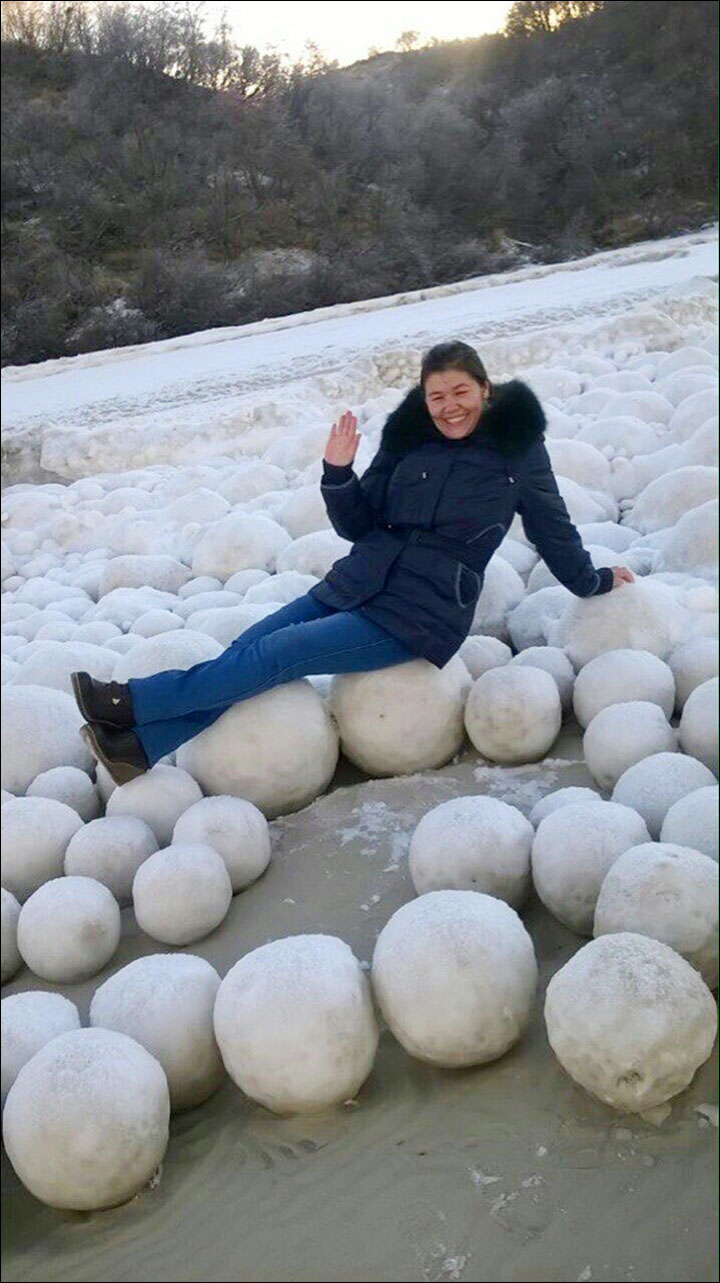Nature has filled a Siberian beach with natural snowballs, being the smallest the size of a tennis ball and the biggest ones the size of a basketball. The phenomenon started in October and pictures of the villagers with the snowballs began to become viral on social media. A similar phenomenon had happened in Michigan in 2013, but this is the first time reported in Siberia.
Just above the Arctic Circle, villagers of Nyda, a town near the Gulf of Ob in Siberia, discovered hundreds of snowballs along an 11-mile (18 kilometers) stretch of the beach. The snowballs are naturally made by the ocean and climate features that amazed the community of Nyda.

Sergey Lisenkov, a spokesman for the Arctic and Antarctic Research Institute (AARI), explained that the giant snowballs are a rare natural phenomenon but not a new one. The snowballs are made because of grease ice, which forms first. Then, the wind, the outlines of the coastline, and the temperature form the balls.
“When the water in the Gulf rose, it came into contact with the frost. The beach began to be covered with ice. Then the water began to slowly retreat, and the ice remained. Its pieces were rolling over in the wet sand, and turned into these balls,” Lisenkov told The Siberian Times.
The different-sized snowball surprised Nyda villagers because it is the first time something like that happens in the country, according to the elderlies of the village, told Valery Akulov from Nyda’s administration to The Siberian Times.
Anyone for a snowball fight? Nature makes its own collection of snowballs on the Arctic shore of the Gulf of Ob https://t.co/sona6DeNr4 pic.twitter.com/9gtG9foJKb
— The Siberian Times (@siberian_times) November 4, 2016
The phenomenon is usually considered as a direct indicator of snowfall in parts of North America and Western Europe. This year Siberia has suffered heavy snow, which could mean the same weather for America. Siberia had an abundant snow cover in October, which could be linked to a weaker winter polar vortex, Mashable says.
Siberian snow cover levels are used by some U.S. meteorologists to forecast how weather patterns could evolve downstream to warn people and give them a chance to take precautions. The weakening of the winter polar vortex could cause more frequent incursions of cold air into North America and Western Europe.

Natural snowballs are a novelty in Siberia but not in the United States
Natural snowballs have been part of the American landscape in the past, although not as massive as it has been in Siberia. The similar phenomenon occurred in Lake Michigan. During winter, boulder-size ice balls could be found in the lake. They are formed by chunks of the ice sheets that cover parts of the lake. When winter comes, they break off, and then they churn in the waves and become ice spheres, LiveScience explains.
Snow rollers are another phenomenon that also involves snowballs, but they do not need water to be formed. The natural event takes place on snow-covered landscapes where winds sculpt the snow into different forms, including snowballs. Snow rollers happen when there is a particular combination of light, sticky snow, strong winds and cold temperatures, according to the National Weather Service.
Source: LiveScience
